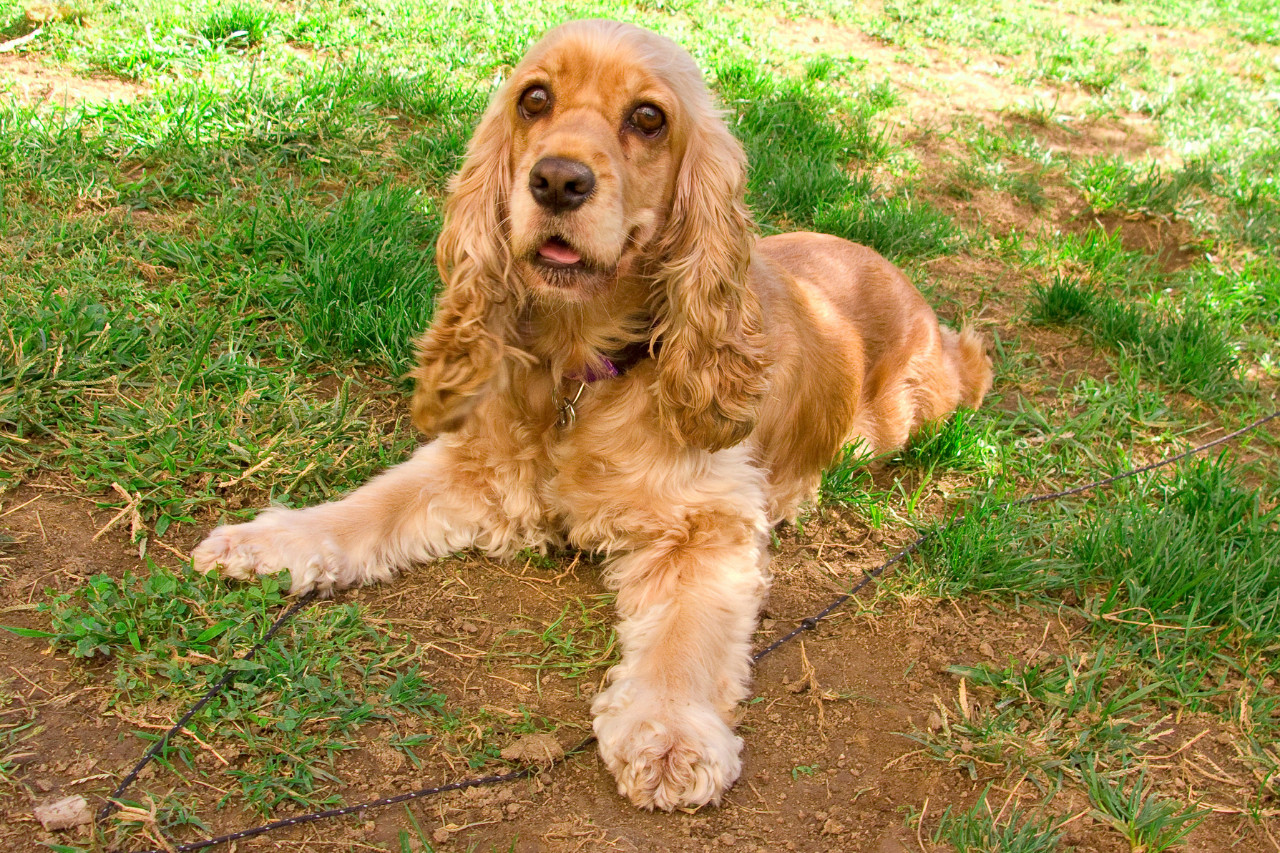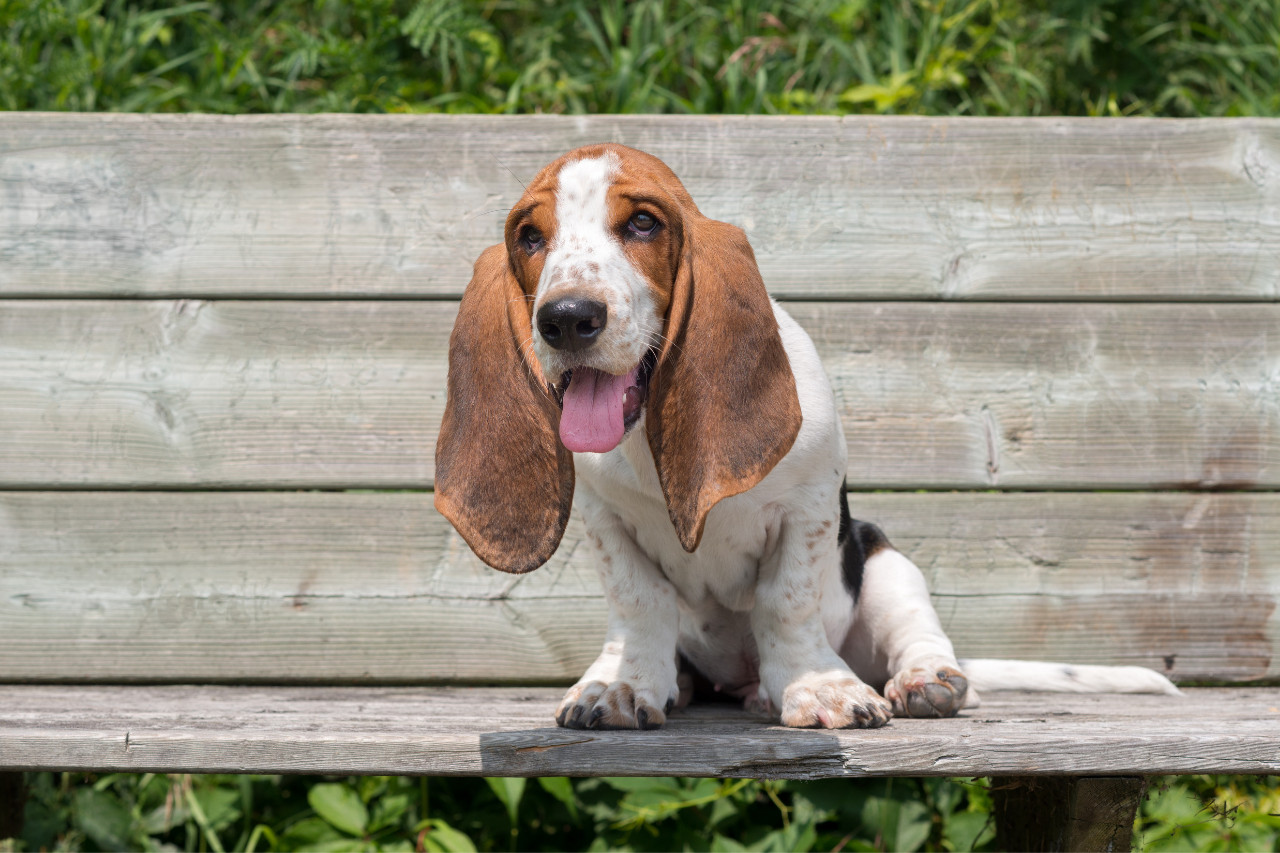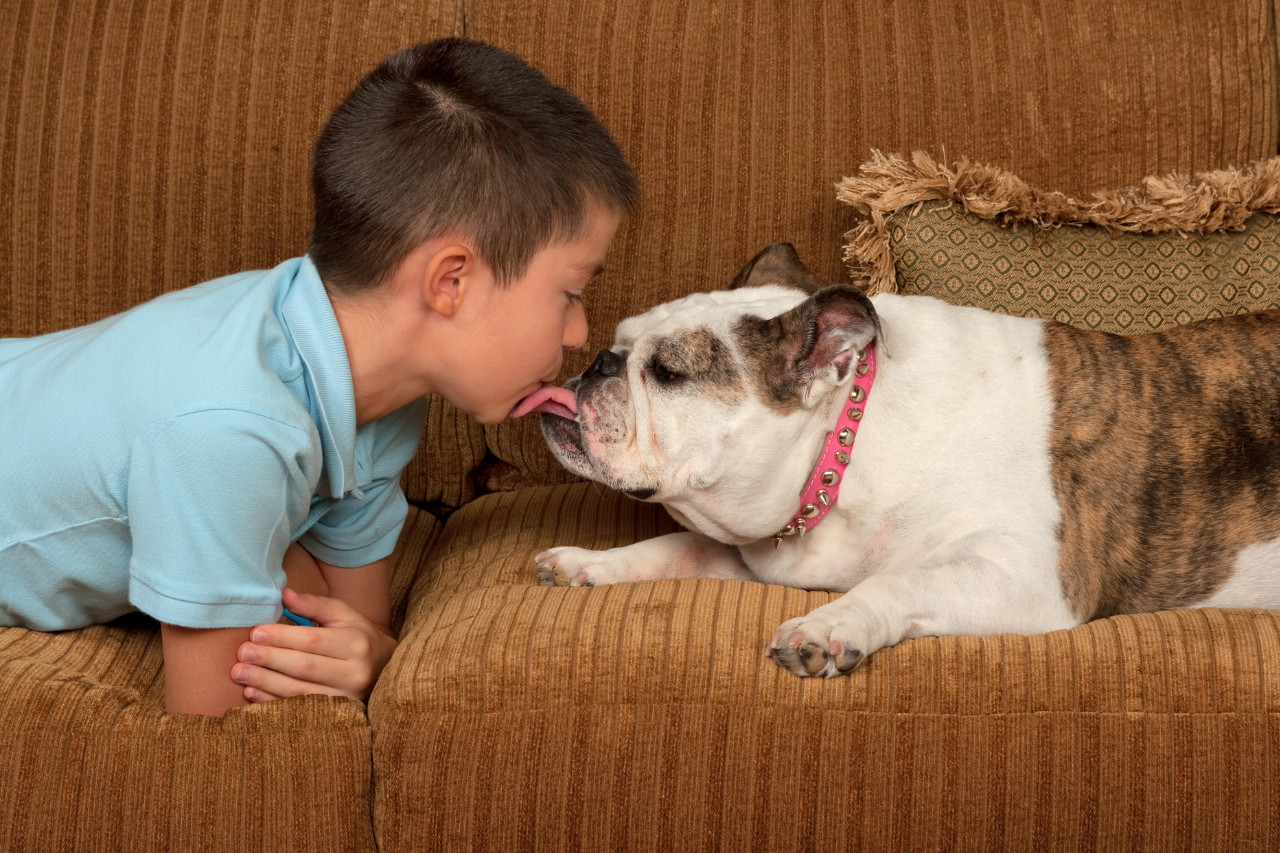Finding the Best Small To Medium Family Dogs can be an exciting journey for your family. At hudsonfamily.net, we understand the importance of choosing a dog breed that complements your family’s lifestyle and brings joy to your home. We offer solutions to help families find dogs that are not only friendly and loving but also fit well with children and various living situations. Discover family-friendly breeds, compatible canine companions, and kid-friendly dogs.
1. What Makes A Dog Breed Ideal For Families?
A dog’s temperament, size, energy level, and health are some of the key factors that determine whether or not it is ideal for families. A family dog should be patient, tolerant, and affectionate, especially towards children.
Understanding the Essentials: When considering the best small to medium family dogs, several factors come into play. According to the American Kennel Club (AKC), a good family dog should possess a gentle temperament, patience, and a playful attitude. These characteristics ensure that the dog can interact positively with children and adapt to the bustling environment of a family home. It’s also important to consider the dog’s energy level, as some breeds require more exercise and mental stimulation than others. Health is another crucial aspect; breeds prone to certain health issues may require more care and veterinary attention, impacting the family’s time and resources.
1.1 What Are The Key Temperament Traits For A Family Dog?
Patience and tolerance, playfulness, affection, and trainability are some of the important temperament traits for a family dog.
The Ideal Temperament: A patient and tolerant dog is less likely to react negatively to accidental pokes or prods from children. Playfulness ensures the dog will engage in fun activities with the family, while affection guarantees a loving bond. Trainability is also key; a dog that can easily learn commands and follow instructions will be easier to manage and integrate into family life.
1.2 How Does Size Matter When Choosing A Family Dog?
Smaller dogs may be better suited for families with limited space, while medium-sized dogs can handle more active play.
Size Considerations: Size matters, especially when living space is a consideration. Smaller breeds, like Cavalier King Charles Spaniels or Boston Terriers, can thrive in apartments or smaller homes. Medium-sized breeds such as Beagles or American Cocker Spaniels, need more room to move and play, but they can also handle more robust play sessions with children. Choosing the right size ensures the dog is comfortable and has enough space to live happily.
1.3 How Important Is The Energy Level Of A Family Dog?
Matching the dog’s energy level to your family’s activity level ensures that everyone stays happy and healthy.
Energy Level Dynamics: The energy level of a dog should align with your family’s lifestyle. If you are an active family that enjoys outdoor activities, a higher-energy breed like a Beagle or American Eskimo Dog might be a great fit. If your family prefers a more relaxed lifestyle, a lower-energy breed like a Bulldog or Basset Hound could be a better choice. Matching energy levels ensures the dog gets enough exercise and mental stimulation, preventing behavioral issues and promoting overall well-being.
2. Top Small Dog Breeds Perfect For Family Life
Some of the best small dog breeds for families include the Cavalier King Charles Spaniel, Beagle, and French Bulldog.
When considering which small dog breeds are the perfect fit for family life, it’s important to look at breeds known for their gentle nature, adaptability, and overall health. A few standout options include the Cavalier King Charles Spaniel, Beagle, and French Bulldog. These breeds are not only affectionate and friendly but also relatively easy to care for, making them great additions to any family.
2.1 Cavalier King Charles Spaniel: The Gentle Companion
Cavalier King Charles Spaniels are known for their gentle and friendly nature, making them great companions for children.
A Heartwarming Companion: Cavalier King Charles Spaniels stand out due to their exceptional temperament. According to the Cavalier King Charles Spaniel Club, these dogs are known for being gentle, friendly, and great with children. Their affectionate nature means they form strong bonds with family members, always ready for a cuddle or a play session. Their adaptability also makes them suitable for various living environments, from apartments to larger homes.
 Best small to medium family dogs loving and gentle Cavalier King Charles Spaniel
Best small to medium family dogs loving and gentle Cavalier King Charles Spaniel
2.2 Beagle: The Playful Hound
Beagles are energetic and playful, making them great for active families who enjoy outdoor adventures.
The Energetic Hound: Beagles are another excellent choice for families seeking an active and playful companion. The National Beagle Club emphasizes their friendly and curious nature, making them great for families who enjoy outdoor adventures. Beagles have a natural love for exploration and can keep up with energetic children, whether it’s a hike in the woods or a game in the backyard. Their sturdy build also means they can handle the rough and tumble of family life.
 Best small to medium family dogs playful and active Beagle
Best small to medium family dogs playful and active Beagle
2.3 French Bulldog: The Adaptable City Dog
French Bulldogs are adaptable and low-energy, making them ideal for city living and families with a more relaxed lifestyle.
The Adaptable Urbanite: French Bulldogs are particularly well-suited for city living and families with a relaxed lifestyle. According to the French Bulldog Club of America, these dogs are known for their adaptable and low-energy nature. Their smaller size makes them ideal for apartments, and they don’t require extensive exercise, making them perfect for families who prefer a more laid-back routine. French Bulldogs are also known for their affectionate and playful nature, ensuring they fit seamlessly into family life.
 Best small to medium family dogs adaptable and friendly French Bulldog
Best small to medium family dogs adaptable and friendly French Bulldog
3. Medium-Sized Dog Breeds That Thrive In A Family Setting
American Cocker Spaniel, Basset Hound, and Bulldog are some of the medium-sized dog breeds that thrive in a family setting.
Choosing the right medium-sized dog breed for your family involves finding a balance between size, energy level, and temperament. Certain breeds are particularly well-suited to thriving in a family setting. American Cocker Spaniels, Basset Hounds, and Bulldogs stand out as excellent choices, each offering unique qualities that make them great family pets.
3.1 American Cocker Spaniel: The Affectionate Companion
American Cocker Spaniels are intelligent and affectionate, making them great family companions who love to be involved in all activities.
The Heart of the Home: American Cocker Spaniels are celebrated for their intelligence and affectionate nature. The American Spaniel Club highlights their ability to thrive in various settings, from rural to urban, as long as they receive regular exercise. These dogs are highly sociable and love being around children, often placing themselves at the center of family activities. Their gentle demeanor and trainability also make them ideal companions for families looking for a dog that can easily adapt to their lifestyle.
 Best small to medium family dogs affectionate American Cocker Spaniel
Best small to medium family dogs affectionate American Cocker Spaniel
3.2 Basset Hound: The Laid-Back Family Member
Basset Hounds are sociable and low-key, known for their relaxed personality and friendly nature, making them great with kids and other pets.
The Relaxed Companion: Basset Hounds are known for their laid-back personalities and friendly nature. The Basset Hound Club of America notes that these dogs are incredibly sociable and get along well with strangers, children, and other pets. While Basset Hounds require moderate activity to maintain a healthy weight, they are equally content to lounge around the house, making them a great fit for families who appreciate a more relaxed pace of life.
 Best small to medium family dogs relaxed and friendly Basset Hound
Best small to medium family dogs relaxed and friendly Basset Hound
3.3 Bulldog: The Calm And Protective Nanny Dog
Bulldogs are calm and loyal, known for their protective nature towards children, often earning them the nickname “nanny dogs.”
The Gentle Protector: Bulldogs are renowned for their calm and loyal disposition. The Bulldog Club of America emphasizes their protective nature towards children, often referring to them as “nanny dogs.” Bulldogs are incredibly tolerant and patient, making them great companions for families with young children. Despite their stocky appearance, they have a relatively low energy level and are happy with routine exercise, making them suitable for both houses and apartments.
 Best small to medium family dogs calm and protective Bulldog
Best small to medium family dogs calm and protective Bulldog
4. Training Tips For Small To Medium Dogs In A Family Environment
Positive reinforcement, consistency, and early socialization are some of the training tips for small to medium dogs in a family environment.
Successfully integrating a small to medium-sized dog into a family environment requires consistent training and socialization. Positive reinforcement techniques, along with establishing clear rules and boundaries, can create a harmonious home for both your family and your new pet.
4.1 How Does Positive Reinforcement Aid Training?
Positive reinforcement involves rewarding good behavior to encourage repetition, making training more effective and enjoyable for the dog.
Rewarding Success: Positive reinforcement is a highly effective training method that involves rewarding your dog for good behavior. According to the American Veterinary Medical Association (AVMA), positive reinforcement can include treats, praise, or toys. By consistently rewarding desired behaviors, you encourage your dog to repeat these actions. This approach not only makes training more enjoyable for your dog but also strengthens the bond between your family and your pet.
4.2 Why Is Consistency Important In Dog Training?
Consistency ensures that the dog understands the rules and expectations, leading to a well-behaved and predictable pet.
Establishing Clear Rules: Consistency is key to successful dog training. Dogs thrive on routine and clear expectations. Ensure that all family members use the same commands and enforce the same rules. This consistency helps the dog understand what is expected of them, leading to a well-behaved and predictable pet. Without consistency, the dog may become confused and less responsive to training efforts.
4.3 What Is The Role Of Early Socialization?
Early socialization exposes the dog to various people, animals, and environments, helping them develop into well-adjusted and confident adults.
Introducing New Experiences: Early socialization is crucial for developing a well-adjusted and confident dog. Expose your dog to a variety of people, animals, and environments from a young age. This exposure helps them become comfortable and confident in different situations, reducing the likelihood of fear or aggression later in life. The American Society for the Prevention of Cruelty to Animals (ASPCA) recommends starting socialization as early as possible, ideally during the puppy’s critical socialization period (up to 16 weeks of age).
5. Addressing Common Behavioral Issues In Family Dogs
Separation anxiety, excessive barking, and nipping or biting are some of the common behavioral issues in family dogs and how to address them.
Integrating a dog into a family environment can sometimes bring about behavioral challenges. Addressing these issues promptly and effectively is essential for maintaining a harmonious household. Common behavioral issues in family dogs include separation anxiety, excessive barking, and nipping or biting.
5.1 How Can Separation Anxiety Be Managed?
Gradual desensitization, providing comfort items, and creating a safe space can help manage separation anxiety in dogs.
Creating a Sense of Security: Separation anxiety is a common issue in family dogs, particularly when they are left alone for extended periods. To manage separation anxiety, consider gradual desensitization techniques. Start by leaving your dog alone for short periods and gradually increase the duration. Provide comfort items, such as a favorite toy or blanket, and create a safe space where your dog feels secure. According to the American Kennel Club (AKC), consulting with a professional dog trainer or behaviorist can also provide tailored strategies for managing separation anxiety.
5.2 What Steps Can Be Taken To Reduce Excessive Barking?
Identifying the cause, providing mental stimulation, and using training techniques can help reduce excessive barking in dogs.
Finding the Root Cause: Excessive barking can be disruptive and frustrating for families. To address this issue, it’s important to identify the underlying cause. Is your dog barking out of boredom, fear, or territoriality? Provide plenty of mental stimulation through puzzle toys, training sessions, and interactive games. Use training techniques, such as the “quiet” command, to teach your dog to stop barking on cue. The Humane Society recommends avoiding punishment, as it can exacerbate the problem and lead to further behavioral issues.
5.3 How To Handle Nipping Or Biting In Dogs?
Teaching bite inhibition, redirecting behavior, and seeking professional help can help handle nipping or biting in dogs.
Teaching Gentle Interactions: Nipping or biting can be a serious concern, especially in a family with children. It’s crucial to address this behavior promptly and effectively. Teach bite inhibition by discouraging rough play and rewarding gentle interactions. If your dog starts to nip or bite, redirect their attention to a toy or a training exercise. Seek professional help from a certified dog trainer or behaviorist if the behavior persists or escalates. Early intervention is key to preventing more serious biting incidents.
6. Health And Wellness Tips For Keeping Your Family Dog Healthy
Regular veterinary check-ups, balanced diet, and exercise are some of the health and wellness tips for keeping your family dog healthy.
Ensuring the health and wellness of your family dog is crucial for their quality of life and longevity. Regular veterinary check-ups, a balanced diet, and consistent exercise are fundamental to maintaining your dog’s health.
6.1 Why Are Regular Vet Check-Ups Important?
Regular vet check-ups help detect potential health issues early, allowing for timely treatment and preventive care.
Preventative Care Is Key: Regular veterinary check-ups are essential for detecting potential health issues early. Veterinarians can identify signs of illness or disease before they become serious, allowing for timely treatment and preventive care. The American Animal Hospital Association (AAHA) recommends annual check-ups for adult dogs and more frequent visits for puppies and senior dogs. These check-ups should include vaccinations, parasite control, dental care, and screenings for common health conditions.
6.2 What Constitutes A Balanced Diet For Dogs?
A balanced diet includes high-quality dog food that meets the dog’s nutritional needs, considering their age, breed, and activity level.
Nutritional Needs Met: A balanced diet is critical for maintaining your dog’s health and energy levels. Choose a high-quality dog food that meets their nutritional needs, considering their age, breed, and activity level. The Association of American Feed Control Officials (AAFCO) provides guidelines for pet food nutrition, ensuring that the food contains the necessary vitamins, minerals, and nutrients. Avoid feeding your dog table scraps or processed foods, as these can lead to weight gain and other health problems.
6.3 How Much Exercise Does A Family Dog Need?
The amount of exercise varies by breed, but daily physical activity and mental stimulation are important for maintaining a healthy weight and preventing behavioral issues.
Staying Active and Engaged: Regular exercise is essential for keeping your dog physically and mentally healthy. The amount of exercise your dog needs will vary depending on their breed, age, and energy level. However, most dogs benefit from daily physical activity, such as walks, runs, or play sessions. Mental stimulation is also important. Puzzle toys, training exercises, and interactive games can help keep your dog engaged and prevent boredom, which can lead to behavioral issues.
7. Integrating A Dog Into A Family With Children
Supervised interactions, teaching children how to interact respectfully, and creating a safe space for the dog are some of the ways to integrate a dog into a family with children.
Introducing a dog into a family with children requires careful planning and supervision to ensure the safety and well-being of both the dog and the children. Establishing clear guidelines and teaching children how to interact respectfully with the dog is essential for creating a harmonious environment.
7.1 How To Ensure Safe Interactions Between Dogs And Children?
Always supervise interactions, teach children how to approach and handle the dog gently, and respect the dog’s space.
Always Supervise: Supervision is key to ensuring safe interactions between dogs and children. Never leave young children unsupervised with a dog, regardless of how gentle or friendly the dog may seem. Teach children how to approach and handle the dog gently, avoiding behaviors that may provoke or scare the dog, such as pulling their tail or ears. The American Academy of Pediatrics (AAP) emphasizes the importance of teaching children to respect the dog’s space and recognize signs of discomfort or stress.
7.2 What Should Children Be Taught About Interacting With Dogs?
Children should learn to approach dogs calmly, avoid disturbing them when they are eating or sleeping, and recognize signs of discomfort or stress.
Respectful Handling: Teach children how to interact respectfully with dogs. Children should learn to approach dogs calmly and avoid sudden movements or loud noises. They should also learn not to disturb dogs when they are eating or sleeping. Teach children to recognize signs of discomfort or stress in dogs, such as lip licking, yawning, or tail tucking. If a dog shows these signs, children should give them space and avoid approaching them.
7.3 How To Create A Safe Space For The Dog?
Providing a quiet retreat where the dog can relax undisturbed helps ensure they have a safe space.
Providing a Retreat: It’s important to provide a safe space where the dog can retreat when they need to rest or escape from the hustle and bustle of family life. This space could be a crate, a bed, or a quiet corner of the house. Teach children to respect the dog’s safe space and avoid disturbing them when they are there. Having a safe space can help the dog feel more secure and reduce the likelihood of stress or anxiety.
8. The Cost Of Owning A Small To Medium Family Dog
Initial costs, ongoing expenses, and unexpected costs are the three categories to consider when determining the cost of owning a small to medium family dog.
Owning a dog involves significant financial responsibilities. Understanding the costs associated with dog ownership can help families budget effectively and ensure they can provide the best possible care for their new pet. The costs of owning a small to medium family dog can be categorized into initial costs, ongoing expenses, and unexpected costs.
8.1 What Are The Initial Costs Of Dog Ownership?
Adoption fees, initial vet visits, and essential supplies like a bed, crate, and leash are some of the initial costs of dog ownership.
Starting Off Right: The initial costs of dog ownership can be substantial. These costs typically include adoption fees or purchase prices, initial vet visits for vaccinations and check-ups, and essential supplies such as a bed, crate, leash, collar, food bowls, and toys. According to the ASPCA, the initial cost of adopting a dog can range from $50 to $500, while purchasing a dog from a breeder can cost anywhere from $500 to several thousand dollars, depending on the breed.
8.2 What Are The Ongoing Expenses Of Dog Ownership?
Food, vet care, grooming, and toys are some of the ongoing expenses of dog ownership.
Continuous Investment: Ongoing expenses are the recurring costs associated with dog ownership. These expenses include food, vet care (annual check-ups, vaccinations, and potential treatments), grooming (professional grooming or at-home supplies), toys, and pet insurance. The annual cost of these expenses can vary depending on the dog’s breed, size, and health needs. The American Kennel Club (AKC) estimates that the annual cost of owning a dog can range from $700 to over $2,000.
8.3 What Unexpected Costs Might Arise?
Emergency vet visits, unexpected illnesses, and behavioral training are some of the unexpected costs that might arise when owning a dog.
Planning for the Unexpected: Unexpected costs can arise at any time and can significantly impact your budget. These costs may include emergency vet visits, unexpected illnesses or injuries, behavioral training, and damage to property. It’s important to have a financial cushion to cover these unexpected expenses. Pet insurance can help mitigate the cost of vet care, but it’s essential to research different policies and understand their coverage limits.
9. Lifestyle Considerations Before Getting A Family Dog
Living space, time commitment, and family members’ allergies are some of the lifestyle considerations before getting a family dog.
Before bringing a dog into your family, it’s crucial to consider your lifestyle and ensure that you can provide a suitable environment for the dog. Factors such as living space, time commitment, and family members’ allergies should be carefully evaluated.
9.1 How Does Living Space Impact The Choice Of Dog?
Smaller dogs are better suited for apartments, while larger dogs need more space to roam and exercise.
Space to Roam: The size of your living space can significantly impact the choice of dog. Smaller dogs are generally better suited for apartments or smaller homes, while larger dogs need more space to roam and exercise. Consider the dog’s energy level and exercise needs when evaluating your living space. Even smaller dogs need room to play and explore, so make sure your home provides enough space for them to move around comfortably.
9.2 How Much Time Commitment Is Required For Dog Ownership?
Feeding, exercise, training, and companionship are all time commitments required for dog ownership.
Time and Attention: Dog ownership requires a significant time commitment. Dogs need daily exercise, training, socialization, and companionship. Consider your family’s schedule and ensure that someone is available to care for the dog throughout the day. If you work long hours or travel frequently, you may need to hire a dog walker or pet sitter to provide the necessary care and attention.
9.3 What About Allergies Among Family Members?
Hypoallergenic breeds and regular grooming are ways to mitigate the effects of allergies to dogs.
Addressing Allergies: Allergies are a common concern for families considering dog ownership. Some breeds are considered hypoallergenic, meaning they produce less dander, which is the primary cause of allergies. However, no dog is completely allergy-free. If you have family members with allergies, consider spending time with different breeds to see how they react. Regular grooming, air purifiers, and allergy medications can also help mitigate the effects of allergies.
10. Where To Find The Perfect Family Dog
Animal shelters, rescue organizations, and responsible breeders are some of the places to find the perfect family dog.
Finding the perfect family dog requires careful research and consideration. Whether you choose to adopt from a shelter or purchase from a breeder, it’s important to prioritize the dog’s health and well-being.
10.1 What Are The Benefits Of Adopting From Animal Shelters?
Adoption saves lives, reduces pet overpopulation, and often costs less than purchasing from a breeder.
Giving a Second Chance: Adopting a dog from an animal shelter is a rewarding experience. Adoption saves lives, reduces pet overpopulation, and often costs less than purchasing from a breeder. Animal shelters typically provide vaccinations, spaying/neutering, and microchipping before adoption. They also assess the dog’s temperament and behavior, providing valuable information to potential adopters.
10.2 What Role Do Rescue Organizations Play?
Rescue organizations specialize in specific breeds or types of dogs, providing tailored care and matching them with suitable families.
Specialized Care: Rescue organizations specialize in specific breeds or types of dogs. These organizations provide tailored care and rehabilitation to dogs in need, often rescuing them from abusive or neglectful situations. Rescue organizations thoroughly screen potential adopters to ensure they can provide a loving and stable home. They also offer ongoing support and guidance to adopters, helping them navigate the challenges of dog ownership.
10.3 How To Identify A Responsible Dog Breeder?
Responsible breeders prioritize the health and well-being of their dogs, conduct health testing, and provide a supportive environment.
Ethical Breeding Practices: If you choose to purchase a dog from a breeder, it’s essential to find a responsible breeder who prioritizes the health and well-being of their dogs. Responsible breeders conduct health testing to screen for genetic conditions, provide a supportive and enriching environment for their dogs, and offer a lifetime commitment to their puppies. They also thoroughly screen potential buyers to ensure they can provide a loving and responsible home.
Finding the best small to medium family dogs involves careful consideration of various factors, including temperament, size, energy level, and health. By understanding these factors and addressing common behavioral issues, families can create a harmonious and loving environment for their new pet. Remember to consider your lifestyle, budget, and the needs of your family before making a decision. Whether you choose to adopt from a shelter or purchase from a breeder, prioritizing the dog’s well-being will ensure a happy and fulfilling relationship for years to come.
For more information and resources on finding the perfect family dog, visit hudsonfamily.net. Our website offers a wealth of articles, advice, and community support to help you navigate the joys and challenges of dog ownership. Connect with us today and discover the perfect canine companion for your family. Address: 1100 Congress Ave, Austin, TX 78701, United States. Phone: +1 (512) 974-2000.
FAQ About The Best Small To Medium Family Dogs
1. What are the most important factors to consider when choosing a small to medium family dog?
Temperament, size, energy level, and health are the most important factors. A good family dog should be patient, tolerant, affectionate, and have an energy level that matches your family’s lifestyle.
2. Which small dog breeds are best for families with young children?
Cavalier King Charles Spaniels and French Bulldogs are excellent choices due to their gentle nature and adaptability.
3. What medium-sized dog breeds are known to thrive in a family setting?
American Cocker Spaniels, Basset Hounds, and Bulldogs are known for their friendly and calm temperaments, making them great family pets.
4. How can I ensure my dog and children interact safely?
Always supervise interactions, teach children how to approach and handle the dog gently, and create a safe space for the dog.
5. What are some common behavioral issues in family dogs, and how can I address them?
Separation anxiety, excessive barking, and nipping or biting are common issues. Gradual desensitization, training, and professional help can address these problems.
6. How much exercise does a small to medium family dog typically need?
Exercise needs vary by breed, but daily physical activity and mental stimulation are important for maintaining a healthy weight and preventing behavioral issues.
7. What are the initial costs of owning a small to medium family dog?
Initial costs include adoption fees, vet visits, and essential supplies like a bed, crate, and leash.
8. What are the ongoing expenses of dog ownership?
Ongoing expenses include food, vet care, grooming, toys, and pet insurance.
9. How can I find a responsible dog breeder?
Responsible breeders prioritize the health and well-being of their dogs, conduct health testing, and provide a supportive environment.
10. What should I do if a family member has allergies to dogs?
Consider hypoallergenic breeds, regular grooming, air purifiers, and allergy medications to mitigate the effects of allergies.


